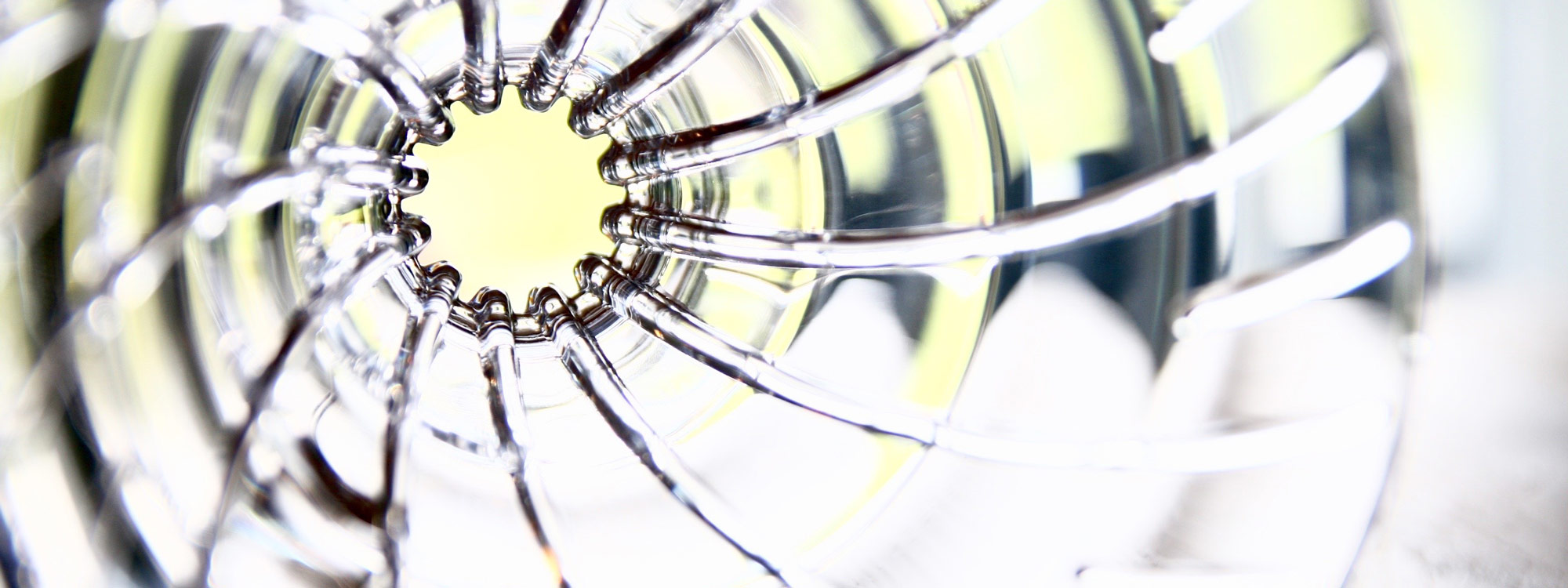The sixth episode! This week I’ll write a little bit about the Hario V60, an evolved pour over style coffee.
Pouring over history
The Hario V60 funnel is one of many Pour Over brewing methods. Pour over is a rather old method, too. In 1908, Melitta Bentz found that percolators were inefficient brewing devices, often either over or under extracting grounds. She was looking for a different, more efficient way too brew. Espressomachines still deposited grounds into every cup of espresso and linen bags (another Pour Over method) were cumbersome to clean. She tried a variety of other media but eventually used blotting paper. The paper was then positioned in a brass pot that she perforated with a nail. The idea was patented in 1908 and became a big success, selling 1200 filters at the Leipzig Fair (Germany) in 1909. The company that we know as Melitta today, had quite a few setbacks during the wars in Europe. The first World War just limited their access to materials like metals and paper. The second World War however even forced them to stop production altogether, after being ordered to produce goods to help fight the war.
The Hario V60, a dripper evolved
The Hario V60 has a lot in common with the Melitta style drippers. For instance, it looks very similar and it still uses a paper filter. That’s also where all similarities end. The V in V60 refers to the shape of the dripper, 60 refers to the angle of the fins inside it. So what are those fins for? The fins are meant to keep the filter from touching the wall of the dripper. Not only do the fins prevent the extract from cooling down too rapidly, it also allows for a more even extraction throughout all of the the grounds. Drippers that don’t have a way to separate the paper from the side wall generally over-extract the grounds in the bottom and center and under-extract the sides.
Making a shoppinglist

This method, like a few other Brewing Methods I’ve covered before, doesn’t require a whole lot of tools. In fact, I only needed to get the actual V60 Dripper to complete the shoppinglist. Note that the gooseneck on the kettle is not an absolute necessity, but it does give you a lot more control while pouring in terms of velocity and precision.
- Hario V60 Dripper and filters or Hario V60 Starter Kit
- Freshly roasted coffee beans
- Grinder
- Kettle, preferably with gooseneck spout
- Water
- Thermometer
- Scale
- Serving vessel or decanter
- Cup(s)
Step by Step
- Fill the kettle, put the thermometer sensor in the kettle and heat the water to around 95C / 203F

If you don’t have a thermometer, boil the water and let it cool for a few minutes
- Take a fresh filter and fold over the joint

We fold the joint to maintain a cone shape
- Grind the coffee on a medium fine setting

I’m making 2 240ml cups of coffee, 2 x 16 = 32 grams of coffee
- Let the water cool down to about ~92C / ~197F

Take the lid off the kettle to make it cool down faster
- Place the filter in the dripper and the dripper on the cup

I use the rinsing water to pre-heat the cup
- With the hot water, rinse the paper filter thoroughly

Rinsing the filter gets rid of the paper taste
- Use a little bit of water to pre-heat every additional cup

A warm cup doesn’t cool down your coffee as fast
- Add the ground coffee into the filter

Add the grounds into the center of the filter
- Even out the grounds

A flat or slightly concave surface will prevent the water from running off
- Put the decanter on the scale and set the dripper on top of it, then zero the scale

If you’re brewing just one cup, you could also brew straight into that
- Slowly start pouring hot water into the grounds and spiral counter clockwise outwards, until the scale reads 35 grams

Adjust up if you’re brewing more, or down if you’re brewing less coffee
- Zero the scale and let the grounds bloom for about 30 seconds

Give the coffee ample time to bloom, releasing the initial flavors and oils
- Slowly add the rest of the water, start in the center, then spiral outwards counter clockwise

Be careful to never hit the very outer edge or the paper filter itself as you will pour straight through and weaken the coffee
- When you’ve added all the necessary water, let the coffee drain from the dripper

When the dripping slows down or stops all together, you’re done brewing
- Empty the cup(s), remove the dripper from the decanter and serve the coffee

Set the dripper on a saucer to catch any lingering water
- Enjoy!
With every new coffee I start with a ratio of 240ml of water (blooming water excluded) to 16 grams of coffee. I then adjust up if the coffee is too weak, or down if it is too strong. Adjust the grind finer when the coffee is under-extracting, passing through the grounds too fast and producing very watery coffee. On the other hand, when the grind is too fine already, it will take a much longer time for the water to pass through and the extensive contact with the grounds will cause a very bitter coffee. If the coffee smells or tastes burnt, you can also let the water cool down a little bit more before brewing.
Another variable to play with is the amount of blooming water. Keep slowly adding water, circling outwards doing so, until there’s only a small rim of seemingly untouched coffee left against the side of the filter. Keep adding water until you see the first drop of coffee landing in the decanter and stop immediately.
The result
The coffee you get from a Hario V60 is infinitely richer than from regular drippers. I narrowed down the grind, amount of beans and water temperature within a few tries and got a wonderful cup of coffee that I found overall smoother and less acidic than most other methods. The V60, like the AeroPress, uses paper filters that tend to trap a lot of coffee oils. The paper filters that are specifically made for the V60 are some of the thinnest filters on the market, trapping a whole lot less oils.
For now I’ll finish this cup of coffee and then try a different blend of coffee in my Hario V60. Afterwards I’ll be doing research on the next chapter in this series. If you want to suggest a specific Brewing Method, have questions or suggestions, please leave them in the comments below. As always, I very much appreciate it when you link to or share this post with friends and / or family.
There are 7 more articles in the Brewing Methods series: The French Press, The Moka Pot, The Vacuum Coffee Maker, Turkish Coffee, The AeroPress, Cold Brew Coffee and Espresso.

















Hi, could you please review the art of vietnamese coffee making? Thank you!
Looking into it, probably soon-ish =)